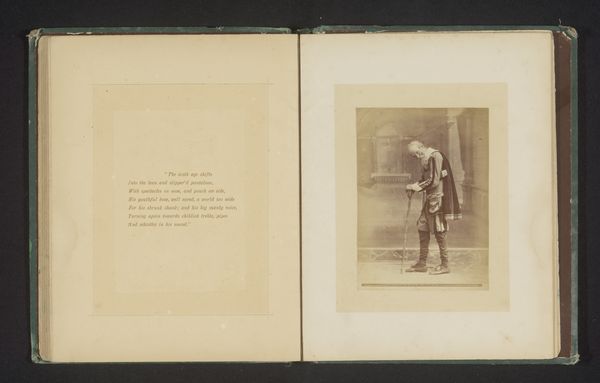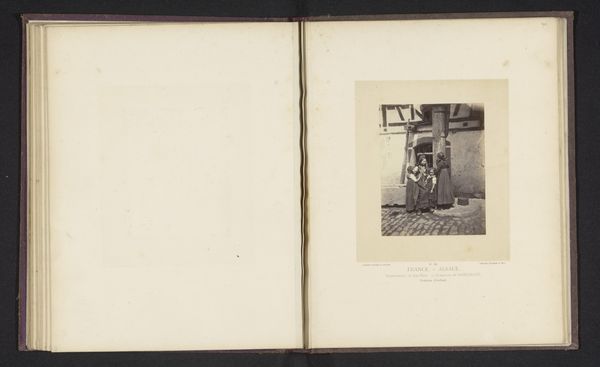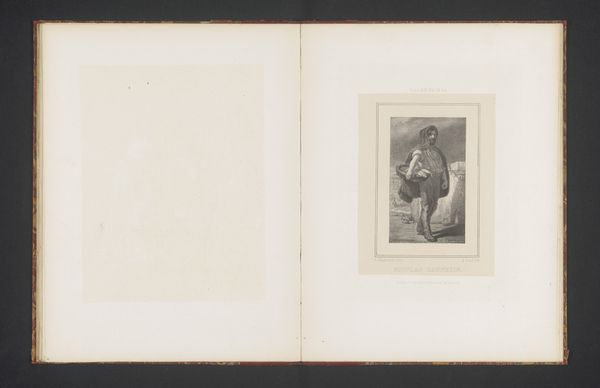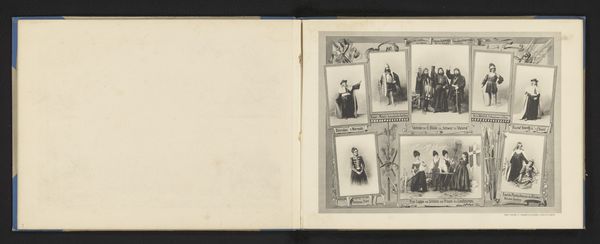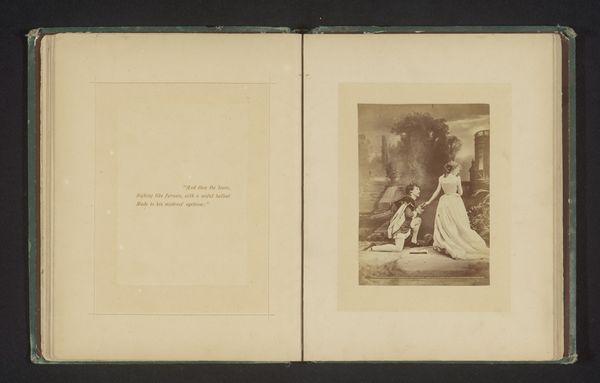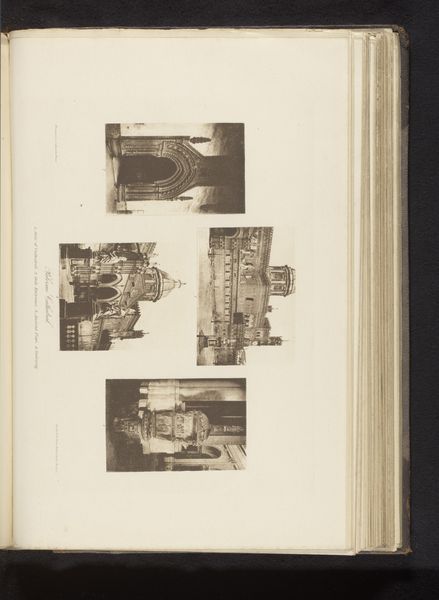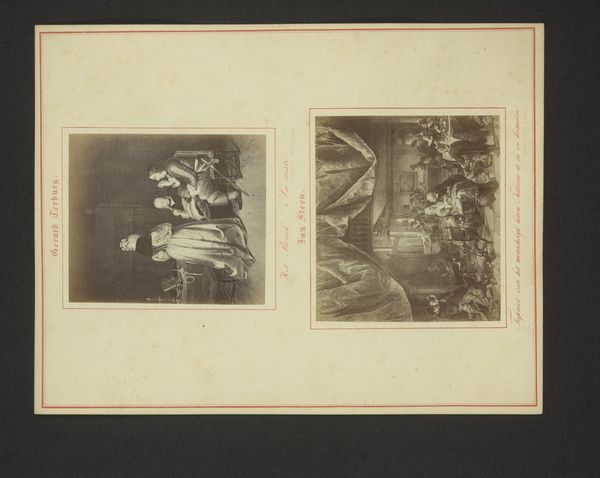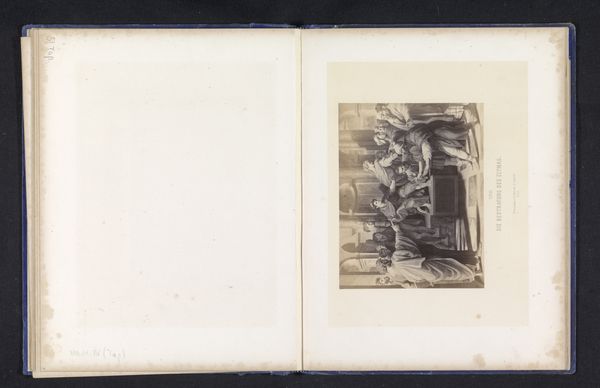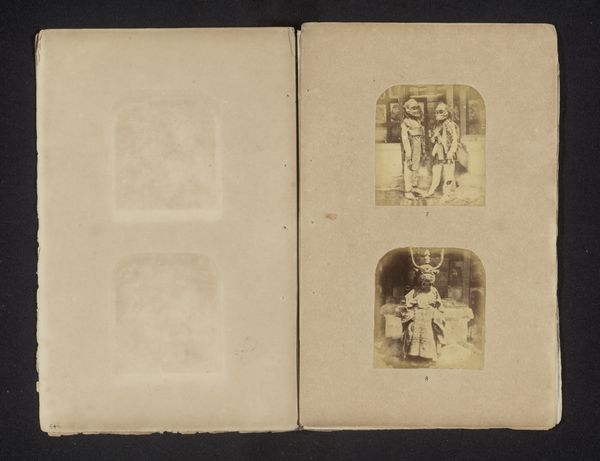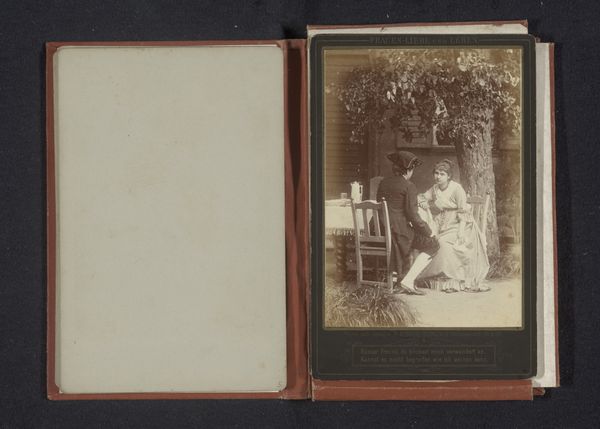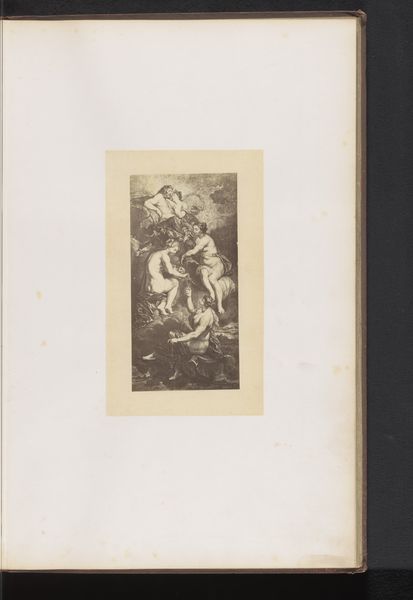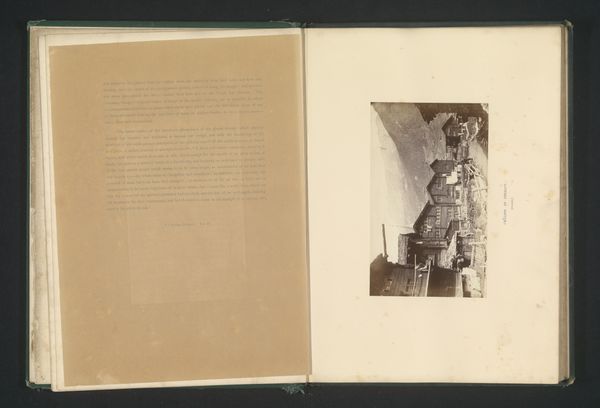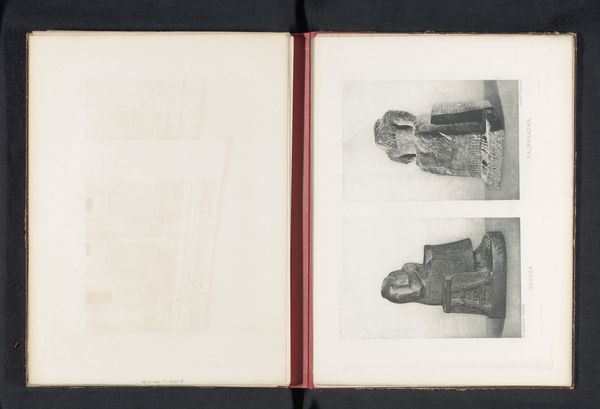
De rechter, ofwel justitie, uit The seven ages of man - As you like it van William Shakespeare before 1877
0:00
0:00
photography
#
portrait
#
aged paper
#
toned paper
#
homemade paper
#
ink paper printed
#
light coloured
#
sketch book
#
paper texture
#
photography
#
personal sketchbook
#
genre-painting
#
historical font
Dimensions: height 139 mm, width 100 mm
Copyright: Rijks Museum: Open Domain
Curator: Here we have "The Justice," a photograph created before 1877 by J. Landy. It's part of a series called "The Seven Ages of Man," inspired by Shakespeare's "As You Like It." It seems to be an image mounted within the pages of what could be a sketchbook. Editor: My first impression is one of profound theatricality. The subject, adorned in costume and seated on such an ornately carved throne, strikes me as deliberate and highly staged. Curator: Precisely. What I find compelling is Landy’s selection of photography for this project. Given the play's themes of mortality and the roles we assume, photography offers a seemingly direct representation of the human subject embodying a symbolic function. Note the "aged paper" and the historical font, elements that contribute to an aura of old worldliness. Editor: Yes, that historicized presentation is quite striking. I see a very self-aware manipulation of iconographic codes here. The judge is not merely a figure but an embodiment of justice itself. Look at how he clutches the object in his left hand, reminiscent of a theatrical mask. It suggests the performative aspect of the role. Curator: That’s astute. The entire photograph might also symbolize the then-expanding notions of craftsmanship applied to the relatively novel technology of photography and, of course, the very literal production of photographic "likeness." Considering this, I find it interesting that this photograph mimics painting techniques and tropes. It invites reflection on the labor involved in producing such imagery and how definitions of art expanded over time. Editor: Certainly, but I think it also prompts us to consider the staying power of particular symbols. Justice has always been depicted as authoritative, discerning, and often...masked, in a sense. These attributes are projected through visual cues that Landy consciously selects and stages. The throne is the symbolic source of power. Curator: A fitting reminder of art’s layered meanings, connecting it to process, culture, and even societal impact. Editor: Indeed, and an apt example of how iconography can inform our understanding of an artwork and, more broadly, ourselves.
Comments
No comments
Be the first to comment and join the conversation on the ultimate creative platform.
